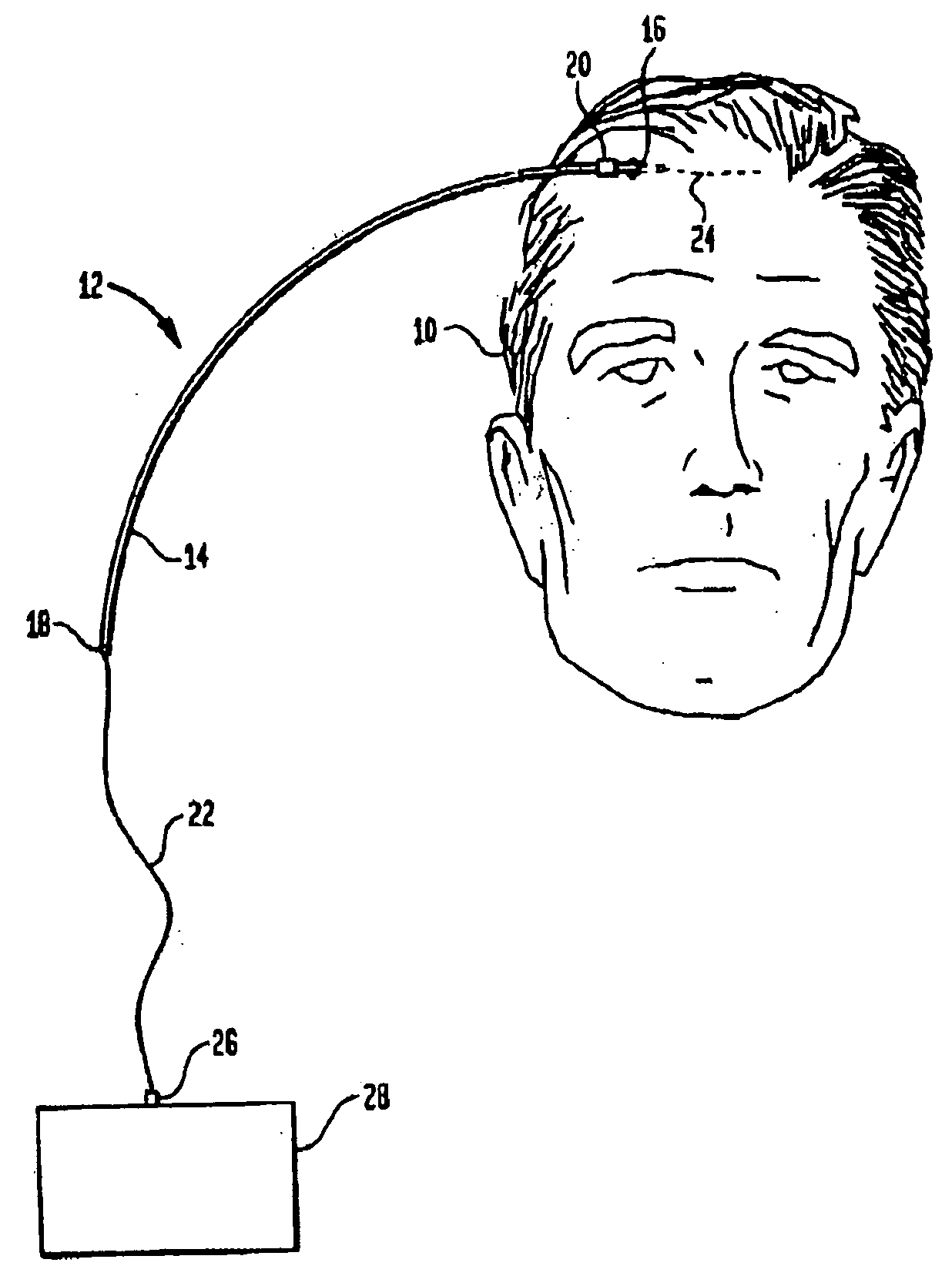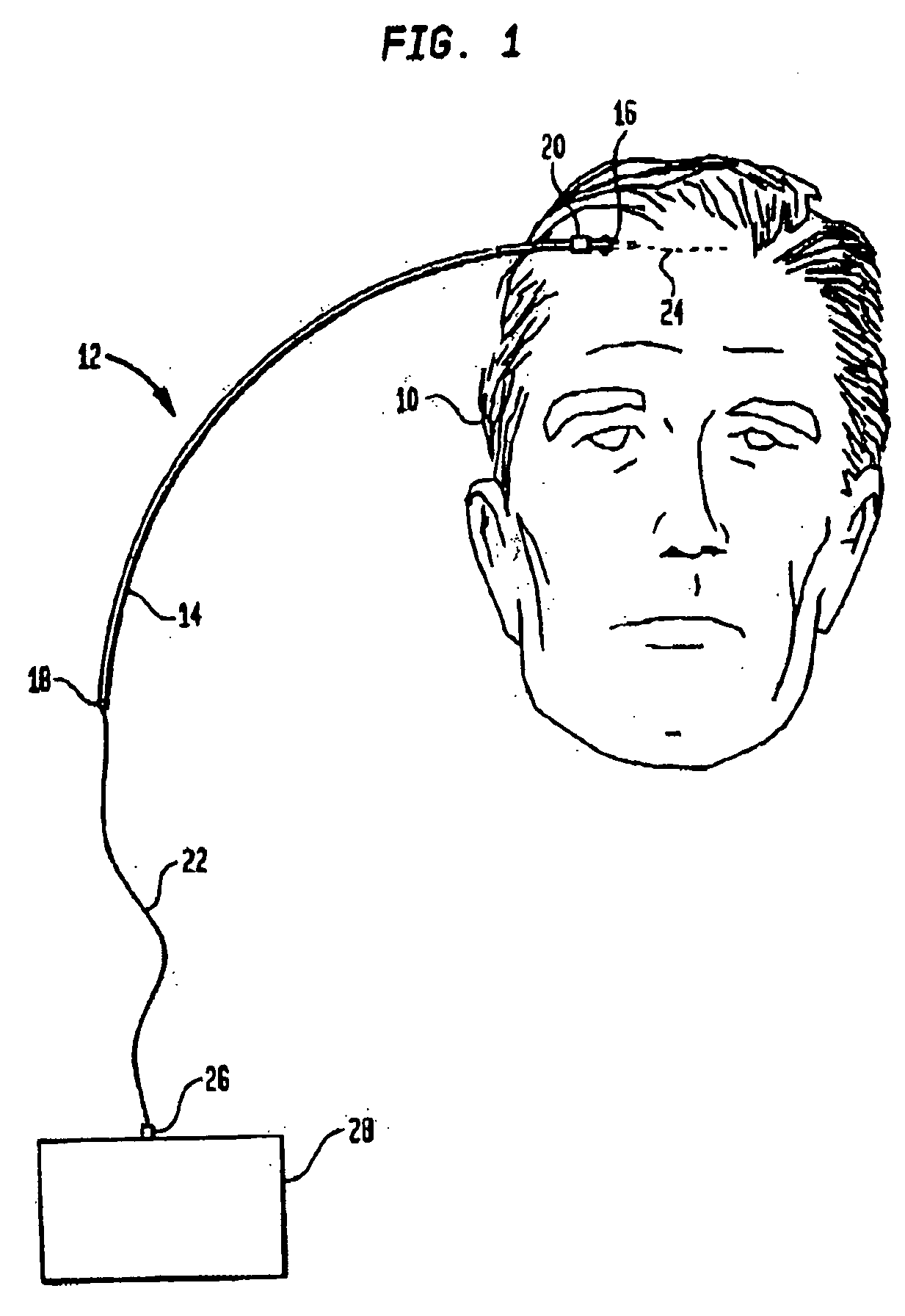Infusion device and method for infusing material into the brain of a patient
a technology of infusion device and patient brain, which is applied in the direction of infusion needle, multi-lumen catheter, other medical devices, etc., can solve the problems of large dead space of catheter, limited reliability and reproducibility of infusion, and significant brain damage, etc., and achieve the effect of effective and accurate us
- Summary
- Abstract
- Description
- Claims
- Application Information
AI Technical Summary
Benefits of technology
Problems solved by technology
Method used
Image
Examples
Embodiment Construction
[0025] Referring now to FIG. 1, there is shown a front view of the skull 10 of a patient illustrating the operative position of an infusion device 12 constructed in accordance with the present invention. As can be seen, there is a flexible guide catheter 14 that has a distal end 16 and a proximal end 18. In the use of the infusion device 12, as will be later explained, the distal end 16 is preferably located within the interior of the skull 10 of the patient whereas the proximal end 18 can be normally located exterior of the patient, or also remain under the scalp.
[0026] Once positioned as shown in FIG. 1, the guide catheter 14 can be affixed to the scalp of the patient by means of one or more sutures 20 or by other methods. The actual location of the distal end 16 of the guide catheter 14 can be achieved through the use of a stereotactic frame, by frameless means or even manually.
[0027] The infusion device 12 also includes a flexible infusion fiber 22 that is threaded within a lu...
PUM
 Login to View More
Login to View More Abstract
Description
Claims
Application Information
 Login to View More
Login to View More - R&D
- Intellectual Property
- Life Sciences
- Materials
- Tech Scout
- Unparalleled Data Quality
- Higher Quality Content
- 60% Fewer Hallucinations
Browse by: Latest US Patents, China's latest patents, Technical Efficacy Thesaurus, Application Domain, Technology Topic, Popular Technical Reports.
© 2025 PatSnap. All rights reserved.Legal|Privacy policy|Modern Slavery Act Transparency Statement|Sitemap|About US| Contact US: help@patsnap.com



